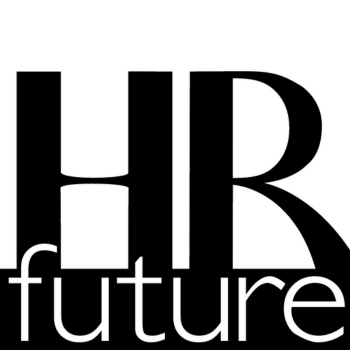You might have heard the saying that your company is only as good as your employees. Even though technology offers sophisticated solutions that streamline business processes, the words still stand true. You might have the state of the art equipment and software, but without a skilled workforce, you will not make the most of those tools. Moreover, it is the people who are behind the most creative and innovative ideas that drive success.
Finding and acquiring the best talent is the goal of every employer, yet truly skilled workers can be hard to come by and even harder to retain. Unfortunately, as the Society for Human Resource Management reports, it may cost you 6 to 9 months of an employee’s salary to find and train their replacement.
A solution to this problem is to design an effective recruitment process that will allow you to reach the best candidates, review the applicants in-depth, and interview them. It is a matter of knowing what exactly you are looking for and asking the right questions. But that is not all. Keep reading to learn about the ins and outs of building your recruitment process.
Identify Your Hiring Needs
Before you get down to building a recruitment process, it is necessary to identify your hiring needs. In other words, you need to create a profile of your ideal candidate. It is an essential step in the whole process that will impact your further actions.
First, you need to determine how this particular role will fit into the team. Do you need a manager who will lead others or an employee who will complete specific tasks? Think in terms of skills – what gaps does the new employee need to fill? Then you have to establish what skills and qualities are crucial for this position and which would be a nice addition. Asking yourself these questions will help you determine the type of person you are looking for.
You might want to skip this step if you are filling an already existing position. After all, you have the old job description that you can recycle. However, the current role, skills, and responsibilities have likely changed over time. Therefore, you need to evaluate it once again.
Determine How to Reach Potential Candidates
Now that you know what you are looking for, you need to devise a way to reach the best pool of candidates. This will involve creating a job posting. According to Bravo interviewer, a good posting clearly defines the position and the responsibilities and is detailed but concise. It should also give information about your company and its goals and values.
When it comes to advertising your job offer, the Internet has made it possible to reach a larger talent pool with job search websites, such as Indeed, Monster, or Glassdoor. You can also leverage social media platforms, such as LinkedIn, Twitter, or Facebook.
Another option is to create an employee referral program and involve your current employees in the recruitment process. By offering them rewards, you can encourage them to refer qualified candidates for the position, which could make your talent pool even 10 times larger.
Prepare for Initial Reviews
Once you start receiving applications, it is crucial to review them thoroughly before moving on to the next stage of the process. When reviewing resumes, you need to pay attention to the candidate’s experience, education, and skills. After all, you have to ensure that they match the requirements you have defined for the position.
You might receive tens and even hundreds of applications. Hence, you should think about implementing a system that will allow you to sort through the applicants efficiently – one that will help you do a quick initial review and eliminate those who do not meet the qualifications. You may use an applicant tracking system (ATS) that will determine which candidates meet your requirements the best by conducting a keyword search for appropriate skills and titles.
Then you should conduct phone screenings to narrow down the selection of candidates you want to invite for interviews. That means creating a list of basic questions such as the candidate’s availability and desired salary. If you cannot accommodate the applicant’s expectations, there is no need to invite them to the next stage.
Build an Optimal Interview Process
As soon as you have shortlisted your applicants, it is time to prepare for the next stage – the interviews. Your objective is to determine the candidate’s actual skills, what kind of a person they are, and how they would fit into your company culture. In addition, you will be able to see how well they handle pressure and conflict.
First, you need to establish what kind of interviewing style you will use. Some employers prefer panel interviews, while others opt for one-on-one meetings. Your choice will influence the course of the whole procedure. For example, if you decide to go for group interviews, you will have a chance to test the candidates’ teamwork skills.
Then you need to create a set of questions that will help you assess the candidates. Many employers recommend asking behavioral questions in which candidates describe their past experiences. For example, you might ask about a particularly stressful situation at their previous job and how they overcame it. This way, you will gain valuable insights into how the person will act in specific situations.
Moreover, you need to prepare a task relevant to the job. It is an opportunity to see the person in action and determine whether they possess the required skills. For instance, you could ask the candidate applying for customer service to write an answer email to an angry customer. You should provide a sample email to assess whether they can mimic your company’s writing style.
Once the interview is over, you have to make a decision. You could offer the candidate the job right away or wait a few days to make sure they are the best for the job.
Final Word
Designing a comprehensive recruitment process might seem like a daunting task, but it is well worth the effort. It will not only allow you to attract the best employees but also retain them. That is why you need to adopt a systematic approach that aims to identify and select the ideal candidates for a specific job who can help you achieve your company’s goals.
Hopefully, this article provided you with valuable insights into the process and gave you a better understanding of where you should start. As we mentioned at the beginning, it all comes down to determining your needs and asking the right questions. However, you can further streamline the process and save time and money by using technology, such as applicant tracking systems.
HR Future Staff Writer






